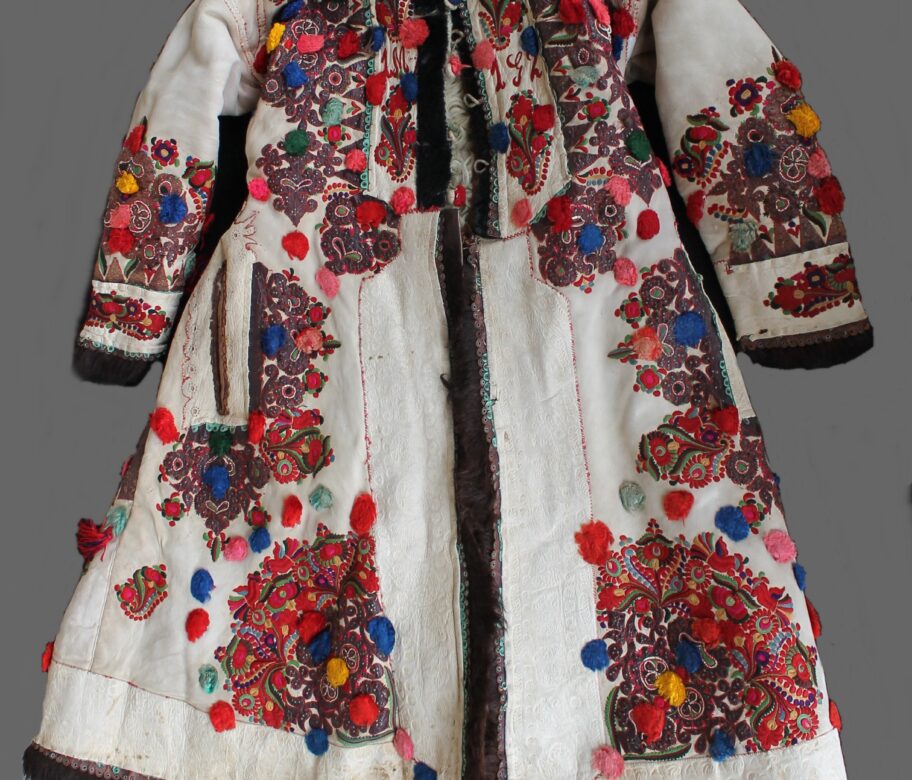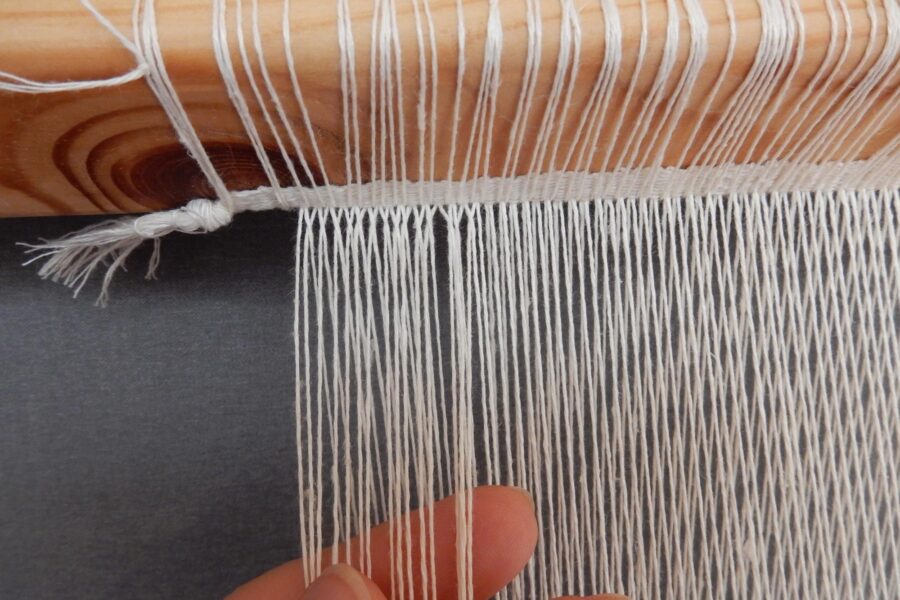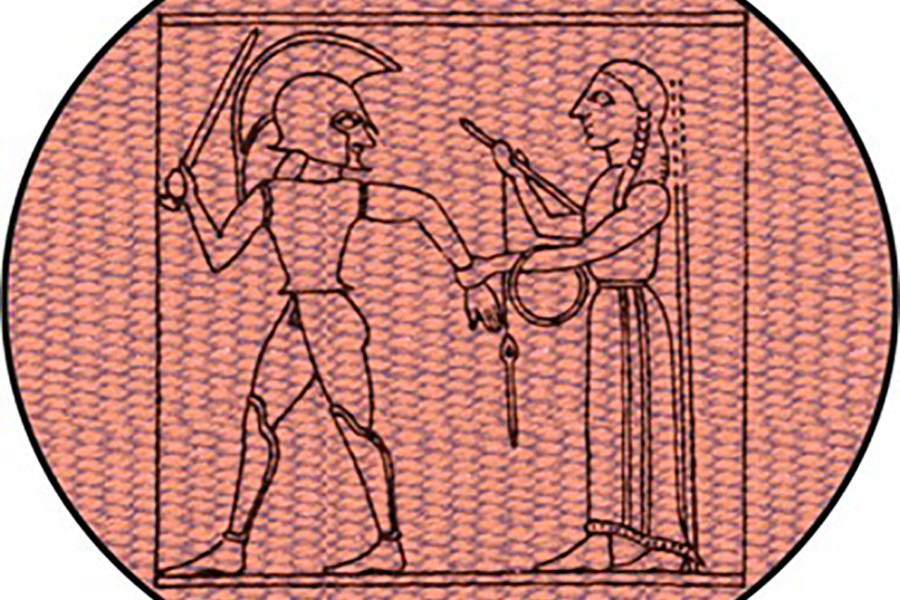

Working Group 4 – The Fabric of Society
Introduction
Objectives: To explore the economic and agricultural impact of textile production and use. To explore the economic and agricultural basis for textile crops and textile trade by tracing textile trade patterns and paths through Europe and through time. To map textile resource areas (water, dyestuffs, cultivation, pasture, cheap but skilled labour) and how they have shifted through time, as well as emerging textile technology regions, which branded their products and created specialised and standardised textile products.
Themes: The first textile crops were cultivated from the beginnings of agriculture (9,000 BCE). The exploitation of wool began because of the domestication and selective breeding of livestock. The first textiles were made of vegetal fibres, such as flax, but there is a significant gap in our knowledge concerning the role of textile crops (dye plants, flax, hemp, cotton) within the agricultural regimes of edible crops in ancient Europe. In Roman times, textile trade was widely attested within and beyond the provinces, it fuelled new markets, and military campaigns shaped the trade relations. Medieval and Early Modern sources inform of trade networks and agents and the textile geography of Europe in terms of production centres and trade routes. European elites use textiles in their architecture as manifestations of power and transportable means of political rhetoric, as tapestries and banners.

Early Modern Europe witnessed high specialisation in textile luxury production protected by mercantilism and agricultural specialisation in flax and hemp for sails (eastern Europe), dye plants (woad and madder in e.g. Thüringen, Provence) and sheep wool (Netherlands, UK). These highly specialised and wealthy areas became vulnerable and challenged each time innovations emerged, e.g., cotton and indigo, yet textile production was long a significant source of wealth. Agents of textile trade, trade networks and theories of trade can be approached from Mesopotamian, Byzantine, Arabic, the Medieval and Early Modern sources.
Major questions are: Q1: What is the interaction between agriculture, herding and textile production in different periods and places? Q2: How can we quantify and qualify textile consumption of a population, and how can we quantify and qualify textile production and trade in past economies? Q3: How was (Early) Modern Europe shaped by textile production? Q4: How did Europe affect the rest of the world through textile trade and colonies, and vice versa?
Team
Working Group
Leader
Francesco Meo
IT
Working Group
Vice-Leader
Irina Petroviciu
RO
Working Group
Vice-Leader
Alexandra Attia
CH
| Country | Name | Affiliation |
| AL | Ilir Aliaj | Mediterranean University, Tirana |
| AT | Elisabeth Trinkl | University of Graz |
| AT | Karina Grömer | Natural History Museum, Wien |
| CH | Alexandra Attia | University of Fribourg |
| DE | Angela Huang | Research Centre for Hanse and Baltic History/ European Hansemuseum Lübeck |
| DE | Berit Hildebrandt | Leibniz Universität Hannover |
| EE | Kerttu Palginõmm | Art Museum of Estonia |
| EL | Christina Margariti | Directorate of Conservation/Hellenic Ministry of Culture |
| EL | Stamatia (Tina) Boloti | Academy of Athens, Research Centre for Antiquity |
| IS | Meghan Anne Korten | University of Iceland |
| IT | Francesco Meo | University of Salento, Lecce |
| IT | Francesca Scotti | Cattolica University of Milan |
| IT | Gabriella Longhitano | University of Catania |
| IT | Maria Emanuela Alberti | University of Florence |
| MK | Liljana Kovachovska | National Museum of Macedonia |
| PL | Joanna Słomska-Bolonek | Center for Research on Ancient Technologies, Lodz |
| PL | Katarzyna Żebrowska | University of Warsaw |
| PT | Francisco B. Gomes | UNIARQ; School of Arts and Humanities of the University of Lisbon |
| PT | Joana Sequeira | Lab2PT/INT2PAST, University of Minho |
| PT | Paula Nabais | NOVA University of Lisbon |
| PT | Ana Catarina Basílio | University of Algarve |
| PT | Daniel Van Calker | UNIARQ – Centre for Archaeology of the University of Lisbon |
| PT | António Carlos Valera | ICArHEB – Interdisciplinary Center for Archaeology and Evolution of Human Behaviour |
| PT | Frederico Agosto | University of Lisbon |
| PT | Andrea Martins | University of Lisbon |
| PT | César Neves | UNIARQ – Centre for Archaeology of the University of Lisbon |
| PT | Ana Claro | NOVA University of Lisbon |
| PT | Vanessa Otero | NOVA University of Lisbon |
| PT | Luís Mendonça de Carvalho | NOVA University of Lisbon |
| PT | Nuno Belino | University of Beira Interior |
| PT | Adelaide Clemente | CE3C, University of Lisbon |
| PT | Carmo Serrano | National Institute of Agrarian and Veterinarian Research |
| PT | Ana Manhita | HERCULES Laboratory – University of Évora |
| PT | Cristina Barrocas Dias | HERCULES Laboratory – University of Évora |
| PT | Teresa Ferreira | HERCULES Laboratory – University of Évora |
| RO | Irina Petroviciu | National Museum of Romanian History |
| RO | Adrian Balasescu | Institute of Archaeology “Vasile Pârvan” |
| RO | Ana Ursescu | Independent researcher |
| RO | Eugenia Nagoda | University of Bucharest |
| RO | Florica Matau | Alexandru Ioan Cuza University of Iasi |
| RO | Iulia Teodorescu | Valahia University of Târgoviste |
| RO | Liviu Mihail Iancu | The Institute for Advanced Studies in Levant Culture and Civilization of Bucharest |
| RO | Mihaela Golea | Institute of Archaeology “Vasile Pârvan” |
| RO | Silvana Vasilca | Horia Hulubei National Institute |
| RS | Jasmina S. Ciric | University of Belgrade |
| SE | Serena Sabatini | University of Gothenburg |
| UK | Sandy Black | University of the Arts London |
Meeting&Events


Training School on hands-on approach to textile tools: documentation, functionality and use-wear. Textile tools from Bronze Age Malia, Crete as a case study
